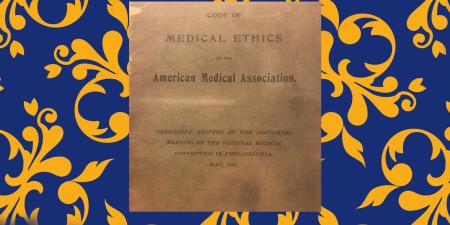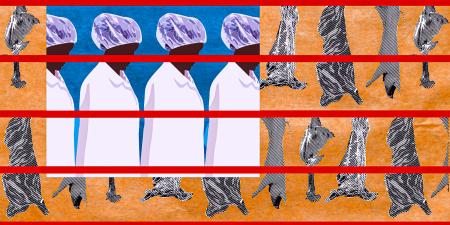Abstract
This article presents 5 general points that every clinician should know about animals, health, and the environment, focusing on why animals matter for their own sakes, why animals matter for health and environmental threats, why health and environmental threats matter for animals, and how the medical and veterinary industries interact with animals. This article then offers practical advice about how to address these issues.
Curricular Neglect
COVID-19 is a reminder that human and nonhuman health and welfare are linked. Many current uses of animals contribute to health and environmental threats, such as pandemics and climate change,1 and harm both humans and nonhumans.2 Yet these links are neglected in curricula where they matter most: medical and veterinary education.
Five Things Every Clinician Should Know About Animals
Our educational systems establish the beliefs, values, and practices that shape our professions, and so positive change in medical and veterinary education is necessary (or, at least, important) for positive change in medical and veterinary practice. We can start by considering 5 things every clinician should know about the intrinsic and instrumental importance of animals.
Animals matter for their own sakes. Ethicists increasingly accept that all sentient beings—that is, all beings who can experience pleasure and pain—matter for their own sakes, and scientists increasingly accept that many nonhuman animals—including all vertebrates and at least some invertebrates—are sentient.1 It follows that many animals matter for their own sakes and that humans have a responsibility to consider their interests when deciding how to treat them.
Many industries currently treat animals like objects. Each year, factory farming kills hundreds of billions of animals, and deforestation and the wildlife trade kill trillions.1 Many other industries harm and kill animals on a smaller—but still large—scale. But in the vast majority of cases, there is very little regulation and oversight of animal use, ensuring generally poor standards for animal welfare.1
Our treatment of animals matters for global health. In addition to killing many animals, industries like factory farming, as well as deforestation and the wildlife trade, also contribute to global health threats like pandemics. For instance, factory farms keep thousands of animals with weakened immune systems in toxic environments, and they use antibiotics and other antimicrobials to suppress disease spread and stimulate growth. As a result, factory farms are ideal places for novel diseases to develop and spread.3
Additionally, deforestation (of which factory farming is a major driver1) contributes to disease spread by increasing interactions between humans and wild animals, as well as by reducing forest biodiversity in ways that tend to favor mosquito species that transmit malaria, snail species that transmit parasitic flatworms, and other such species.4 And while the wildlife trade might or might not have caused COVID-19,5 the practice of breeding and capturing wild animals to keep or kill could easily cause future disease outbreaks.6
Our treatment of animals matters for the environment. These industries also interfere with delicate ecosystems, and they contribute to environmental threats like biodiversity loss and climate change.7 For example, animal agriculture as a whole is responsible for an estimated 14.5% of global anthropogenic greenhouse gas emissions.8 These emissions primarily take the form of methane and nitrous oxide, both of which have “global warming potential” that is orders of magnitude greater than that of carbon dioxide.9
Deforestation contributes to climate change as well, since forests are natural carbon sinks that capture and store carbon dioxide in the ground. So, when we clear forested land, we both release carbon dioxide into the atmosphere and diminish the planet’s ability to capture and store carbon dioxide in the future. Animal agriculture and deforestation can also increase local air, land, and water pollution, thereby worsening physical and mental health outcomes for workers and local community members.1
Global health and the environment matter for animals. These global health and environmental threats can harm and kill nonhumans as well as humans. The COVID-19 pandemic harmed and killed many animals, not only by exposing them to the virus but also by exposing them to increased human violence and neglect, particularly when viral outbreaks and supply chain breakdowns produced mass culling of farmed animals.1 At the time of this writing, bird flu outbreaks are having similar effects on animals.10
More generally, climate change will cause temperatures to rise, ice caps to melt, sea levels to rise, coastal areas to flood, and an increase in the frequency and intensity of extreme weather events like storms, floods, and heat waves. These changes will harm humans and nonhumans alike not only by exposing them to extreme weather but also by exposing them to the effects of social, political, economic, and ecological disruption, including increased human violence toward and neglect of nonhuman climate refugees.1
Medical and veterinary research and education still harm, kill, and neglect animals. While medical schools have phased down the use of live animals in teaching,11 biomedical research still uses 15 to 25 million animals each year in the United States alone,12 despite the fact that humane alternatives, such as human cells and computer models, are increasingly available. Similarly, while veterinary schools have phased down “terminal” surgeries in the required curriculum in recent years,13 veterinary research still uses animals,14 although the scale of this harm is currently unclear.
Instruction on animal welfare appears to be virtually completely absent in medical curricula.
Medical and veterinary education support the status quo in other ways as well. Many medical and veterinary schools continue to prominently feature animal products such as meat, eggs, and dairy in their menus, despite the fact that humane, healthful, and sustainable plant-based alternatives are increasingly available. And, as we will discuss in more detail below, medical education and veterinary education generally neglect all the above points about animals, health, and the environment in their curricula as well.
How to Improve Education About Animals
Given the extent to which health professionals interact with animals, directly or indirectly, as well as how much animals matter for global health and environmental issues, it is imperative that clinicians seek to expand coverage of the importance of, and links between, human and nonhuman health and welfare in medical and veterinary curricula, as well as improve treatment of animals in medical and veterinary research and education. There are several practical steps that educators and other professionals can take to meet this goal, some of which concern medical and veterinary curricula and others of which concern related practices.
Improving medical and veterinary curricula. Where possible, medical and veterinary schools can add classes on topics related to the importance of animal welfare and the links between human, nonhuman, and environmental health. They can also support faculty in identifying relevant books, articles, authors, and speakers, as well as in adding units to existing classes and slides to existing units.15
Currently, instruction on animal welfare appears to be virtually completely absent in medical curricula.16 And while medical students may no longer be using animals as part of their education, they still have access to labs conducting animal research, and they still have futures as health professionals whose beliefs, values, and practices will shape health policy. This is reason enough for them to learn about animal welfare at the start of their careers.
Likewise, while instruction on animal welfare is increasingly part of veterinary curricula, it has yet to become a core subject at most schools. Yet veterinary students have at least as much reason to learn about animal welfare as medical students, if not more reason. For instance, one study found that, after taking a course on animal welfare, veterinary students exhibited more positive attitudes towards “pest” and “profit” animals alike.17
Fortunately, some medical and veterinary schools are starting to adopt the One Health framework, which recognizes the links between human, nonhuman, and environmental health.18 Nevertheless, only about half of 133 medical schools surveyed cover One Health, with a higher rate of adoption at veterinary schools.19 And even when schools do cover One Health, topics such as farmed animals, wild animals, antimicrobial resistance, and zoonotic disease spread remain relatively neglected.20
As clinicians work to develop these curricula, they can also take care not to privilege some animals, such as domesticated terrestrial vertebrates, over others, such as wild animals, aquatic animals, and invertebrates. Given that humans care about some animals more than others, this kind of privileging might seem natural. But it would have the effect of reinforcing the invisibility of massive, vulnerable nonhuman populations.1
Making other, related changes in medical and veterinary schools. Clinicians can work to make related changes that would not only reinforce these curricular changes but also be independently valuable. Human violence toward and neglect of nonhuman animals are multifaceted, structural problems that require multifaceted, structural solutions. The more we pursue positive change in multiple areas at the same time, the more we might find that progress in each area makes progress in others easier to accomplish.
One option is for clinicians to work to phase down use of animals in science. In the context of human subjects research, we all agree that invasive, harmful, and lethal research on vulnerable populations without the possibility of consent is unacceptable, particularly when alternatives are available. By accepting this principle in the context of nonhuman subjects research as well, clinicians can support positive change both directly, by improving research, and indirectly, by making it clear that animal welfare is important.21
Another option is for clinicians to work to phase down animal products in school and hospital cafeteria menus (taking care, of course, to meet the health needs of consumers). As with unnecessarily harmful uses of animals in science, unnecessarily harmful uses of animals for food are unacceptable. By supporting these menu changes, clinicians can bring about positive change both directly, by improving health outcomes, and indirectly, by making it clear that humane, healthful, and sustainable plant-based food practices are important.
A third, related option that clinicians can pursue is public outreach about animal welfare, public health, and the environment. For instance, clinicians can seek to educate the public about the links between human and nonhuman health and welfare by not only discussing these issues with clients but also speaking and writing about them when possible. They can also call for policies to improve outcomes for humans and nonhumans at the same time—particularly policies to reduce the use of animals (such as food system reform) and policies to increase support for animals (such as wildlife and endangered species protections) in ways that benefit humans, too.
Changes Both Within and Beyond the Classroom
Addressing modern global health challenges requires understanding the importance of, and links between, human and nonhuman health and welfare. By including these topics in medical and veterinary education and making related changes in research and food practices, the current generation of clinicians can empower the next generation to do this needed work.
References
-
Sebo J. Saving Animals, Saving Ourselves: Why Animals Matter for Pandemics, Climate Change, and Other Catastrophes. Oxford University Press; 2022.
- Garcés L. Covid-19 exposes animal agriculture’s vulnerability. Agric Human Values. 2020;37(3):621-622.
-
Otte J, Roland-Holst D, Pfeiffer R, et al. Industrial livestock production and global health risks. Pro-poor Livestock Policy Initiative; 2007. Research report 07-09. Accessed December 19, 2022. https://www.fao.org/3/bp285e/bp285e.pdf
-
Chivian E, Bernstein A. How our health depends on biodiversity. Center for Health and the Global Environment, Harvard Medical School; 2010. Accessed October 3, 2022. https://www.bu.edu/sph/files/2012/12/Chivian_and_Bernstein_2010_How_our_Health_Depends_on_Biodiversity.pdf
- Worobey M, Levy JI, Serrano LM, et al. The Huanan Seafood Wholesale Market in Wuhan was the early epicenter of the COVID-19 pandemic. Science. 2022;377(6609):951-959.
-
Akhtar A. Animals and Public Health: Why Treating Animals Better Is Critical to Human Welfare. Palgrave Macmillan; 2012.
-
Kolbert E. The Sixth Extinction: An Unnatural History. Henry Holt & Co; 2014.
-
Gerber PJ, Steinfeld H, Henderson B, et al. Tackling Climate Change Through Livestock—a Global Assessment of Emissions and Mitigation Opportunities. Food and Agriculture Organization, United Nations; 2013. Accessed December 19, 2022. https://www.fao.org/3/i3437e/i3437e.pdf
- Grossi G, Goglio P, Vitali A, Williams AG. Livestock and climate change: impact of livestock on climate and mitigation strategies. Anim Front. 2018;9(1):69-76.
-
Stokstad E. Deadly bird flu establishes a foothold in North America. Science. 2022;377(6609):912.
-
Last remaining medical school to use live animals for training makes switch to human-relevant methods. News release. Physicians Committee for Responsible Medicine; June 30, 2016. Accessed May 2, 2022. https://www.pcrm.org/news/news-releases/last-remaining-medical-school-use-live-animals-training-makes-switch-human/
- Kinter LB, DeHaven R, Johnson DK, DeGeorge JJ. A brief history of use of animals in biomedical research and perspective on non-animal alternatives. ILAR J. 2021;62(1-2):7-16.
-
Krebsbach S. Vet student instrumental in ending terminal surgeries. Humane Society Veterinary Medical Association. Accessed May 2, 2022. https://www.hsvma.org/vet_student_instrumental_in_ending_terminal_surgeries#.YmmZkNPMKfX/
-
Thurman F, Savoy M. Animal care and use in veterinary teaching and research. In: Harnett SM, Cantwell LP, eds. Finding Your Seat at the Table: Roles for Librarians on Institutional Regulatory Boards and Committees. Rowman & Littlefield; 2022:167-180.
-
Howard B. Climate change in the curriculum. Association of American Medical Colleges. October 10, 2019. Accessed May 2, 2022. https://www.aamc.org/news-insights/climate-change-curriculum/
- Shivley CB, Garry FB, Kogan LR, Grandin T. Survey of animal welfare, animal behavior, and animal ethics courses in the curricula of AVMA Council on Education-accredited veterinary colleges and schools. J Am Vet Med Assoc. 2016;248(10):1165-1170.
-
Dwyer C, Bacon H, Coombs T, Langford F. Educating the animal welfare practitioners of the future. In: Sommerville R, ed. Changing Human Behaviour to Enhance Animal Welfare. CAB International; 2021:65-81.
- Sellars L, Bernotas K, Sebo J. One Health, COVID-19, and a right to health for human and nonhuman animals. Health Hum Rights J. 2021;23(2):35-47.
-
Docherty L, Foley PL. Survey of One Health programs in US medical schools and development of a novel One Health elective for medical students. One Health. 2021;12:100231.
-
Togami E, Gardy JL, Hansen GR, et al. Core competencies in One Health education: what are we missing? NAM Perspect. June 4, 2018. Accessed December 19, 2022. https://nam.edu/core-competencies-in-one-health-education-what-are-we-missing/
-
Zemanova M, Knight A. The educational efficacy of humane teaching methods: a systematic review of the evidence. Animals (Basel). 2021;11(1):114.



